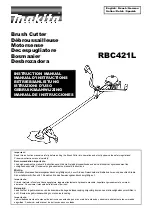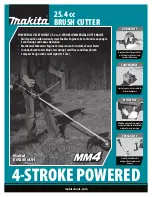
5.5
Fork tines
The accessory equipment is equipped with 11 fork tines which can be
replaced individually and are housed in the tine sleeves at the bottom
of the frame. These tines are used to penetrate the clamp and extract
the silage block.
Check the tines before starting to work. Do not use the fork tines
if they are bent or have become loose.
Defective tines need to be replaced
5.6
Cutting bar
The accessory equipment is fitted with a cutting bar which allows it to
cut the silage block. Mounted on the lower edge of the cutting bar are
knives which sever the silage block from the clamp when the cutting
bar is lowered. A pulley system powered by a hydraulic cylinder is
used to move the cutting bar.
5.7
Cutting knives
The cutting bar is equipped with one stationary and one moving
cutting knife each on the long front side and the two sides which allow
the cutting bar to cut the silage block. The moving knives are powered
by a hydraulic cylinder which is mounted at the center on the front
side of the cutting bar.
Check the cutting knives before starting to work. Do not use the
cutting knives if they are bent / worn out.
Clean and sharpen the cutting knives regularly.
Stationary and moving cutting knives must be in contact with one
another along the entire length of the unit. There must not be a
gap between them which may allow silage to settle between the
knives and the interior of the cutting bar while the silage is being
cut.
Defective cutting knives need to be replaced
5.8
Push-off system
– mechanical
The accessory equipment is fitted with a mechanical push-off
system (standard equipment for rear installation) which is used to
set down the cut silage block.
Spring tension is used to tighten the push-off system while the fork
tines penetrate the clamp, thereby making it easier to set down the
cut silage block.
Fig. 5.8-1
5.9
Push-off system
– hydraulic
The accessory equipment can also be equipped with a hydraulic
push-off system, allowing for a smoother deposit of the silage
block. When actuating the hydraulic push-off system manually, the
operator can control its thrust more accurately than the thrust of the
mechanical push-off system. Also, the thrust of the hydraulic push-
off system is greater on account of its hydraulic drive.
The operator uses the control panel to extend and retract the push-
off system.
Fig. 5.9-1
















































